Updated September 18, 2023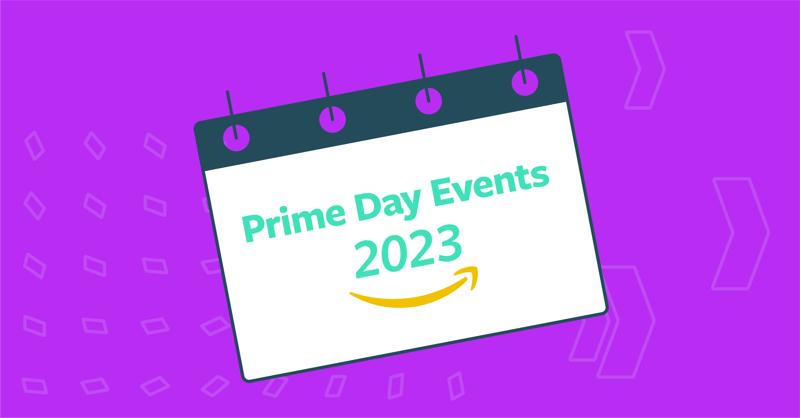
The biggest online retail holidays are back again. For the second year in a row, Amazon will host two Prime events: Prime Day 2023 and Prime Big Deal Days.
Prime Day 2022 occurred twice last year: during the summer on July 12-13, 2022, as well as a Fall Prime Day event on October 11-12, 2022. July's Prime Day 2022 was Amazon's biggest Prime Day to date, with over 300 million items purchased worldwide and close to $12B generated during the 48-hour event.
As you plan for peak shopping seasons, prepping for Prime Day events is a must. Read on for the most important dates, deadlines, and strategies to implement ahead of Prime Day 2023.
Similarly to 2022, Amazon is hosting a second Prime Day event this fall. Their Prime Big Deal Days event will be October 10-11, 2023, and serve as the official kickoff to the Q4 shopping season on Amazon.
With the Prime Big Deal Days event ringing in the 2023 holiday shopping season, we recommend fine-tuning your Prime Day strategies early. Review data and consumer insights from this summer's Prime Day and last year's holiday sales. Adjust your plans accordingly, with an emphasis on inventory forecasting, keyword research, and advertising performance.
Think of the most recent Prime Day as a crash course as you prepare for the next one: What worked, what didn’t, and what could you have done better? Did your customers behave the way you expected? Do you need to make some strategic changes (stock, product assortment, shipping methods, marketing/branding)? Make those changes now and focus on these 8 strategies to maximize Prime Big Deal Days sales potential.
Amazon Prime Day 2023 will take place on July 11-12, 2023. For Amazon FBA sellers, the inventory cut-off date was June 15, 2023—meaning inventory should have arrived at Amazon FBA centers by this date for processing. Keep this timeline top of mind for any priority ASINs with high sell-through projections to have on hand for Prime Day 2023.
Based on last year's timeline, here are the Prime Day-specific deadlines you need to start planning for:
Winning Prime Day customers is directly correlated with quickly forecasting the right amount of inventory to send in for Prime Day. Accurately forecasting and determining the quantity to send can be difficult, but there's nothing worse (or more frustrating) than having orders you can’t fulfill due to a lack of inventory.
Reflect on last year’s Prime Day and holiday sales, keep an eye on demand for certain products this year, and keep track of processing and stock-in times at Amazon. It's also important to be aware of Amazon's newest updates to FBA restock limits, FBA auction, and FBA capacity management. If you’re looking for assistance with FBA and other logistics, an Amazon seller management service (ahem, SupplyKick) can help you tackle those issues.
Accurately forecasting for Prime Day 2023 is important, but it’s also key to keep the rest of the year in mind, too—use our Amazon FBA Calendar to stay on top of your FBA ship-in dates for Prime Day and other high-traffic marketplace holidays throughout 2023 and into 2024.
At the start of 2023, the SupplyKick team built this Amazon Holiday Checklist to help sellers plan for high-traffic seasons on the marketplace, and Prime Day is certainly one of them! You will need to expedite this timeline for Prime Day 2023, so we advise getting a head start on this right now:
 |
|||||||||||||||||||||||||||||||||||||||||||||||||

|

|
||||||||||||||||||||||||||||||||||||||||||||||||

|

|
||||||||||||||||||||||||||||||||||||||||||||||||
Advertising during Prime Day is a must. According to Amazon, 82% of shoppers are likely or highly likely to learn about new brands leading up to Prime Day, and brands that advertised leading up to and during Prime Day showed a 216% increase in awareness and 214% increase in considerations, compared to the prior week.
Even though ads are getting more expensive, they are more necessary now than ever. Simply put, Amazon is pay-to-play. You just have to be smart about what you’re throwing your dollars at and how you're managing/optimizing Amazon Ads during this crucial time period.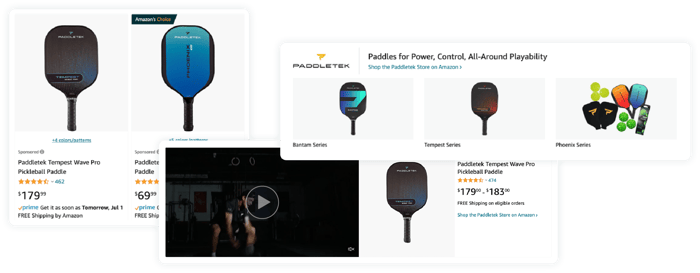 Amazon Prime Day sends a lot of traffic to the marketplace, which means you need to be prepared for higher CPCs. Prime Day is an extremely high-competition event for advertising, and spending more is the only way to make sure your ads are seen. Increasing your daily campaign budgets to 2-3 times their normal daily allocation for Prime Day is a solid strategy. Our paid advertising guide shows you how to execute an effective ads strategy and offers other tips applicable year-round.
Amazon Prime Day sends a lot of traffic to the marketplace, which means you need to be prepared for higher CPCs. Prime Day is an extremely high-competition event for advertising, and spending more is the only way to make sure your ads are seen. Increasing your daily campaign budgets to 2-3 times their normal daily allocation for Prime Day is a solid strategy. Our paid advertising guide shows you how to execute an effective ads strategy and offers other tips applicable year-round.
Ideally, you should start running Prime Day campaigns at least two weeks in advance. That allows your campaigns to earn sales history, which increases their authority within Amazon's platform, as well as allows you to optimize where and when needed. If you turn your campaigns on for the first time on Prime Day, you probably won't be successful. Keep a close eye on the performance of your Sponsored Products, Sponsored Brands, Sponsored Brands Video, Sponsored Display, and Amazon DSP ads leading up to, during, and after Prime Day and adjust accordingly.
Also consider driving traffic to your Amazon Store and product listings during Prime Day from Google and Facebook, via influencer marketing campaigns, other sites, and even your own DTC website. Buy with Prime can help you provide an even easier shopping experience for Prime members on your DTC site.
Shoppers flock to Amazon Prime Day for great deals, so take advantage of the sheer volume of potential customers and update your promotions accordingly. Attract deal-seeking shoppers with Coupons and Prime Exclusive Discounts, which make your product stand out (they’re tagged on Amazon with a “Prime Day Deal” label) and increase your click-through rate during the event.
You can also explore product variations, which combine similar products varying in size or color to one listing, as well as offer product bundles, which combine complementary items that customers may want to buy together (such as a gift set or gardening tool bundle). You can give your Prime Day customers a great deal this way, while potentially generating better margins. Be sure to check Amazon’s policies on bundling to make sure your products follow their guidelines.
Note: Check the deadlines for when you need to submit your coupons and deals. (Listed above)
Highly strategic creative efforts are a great way for brands to communicate their legitimacy and value proposition, build trust with shoppers, and increase Amazon sales. SupplyKick partners have seen a 2x increase in conversion from updating their Amazon creative alone.
Shoppers who watch videos on a product listing are 3.6 times more likely to buy the product, according to Amazon experience data. Amazon has prioritized videos above photos on listings, and in a recent SupplyKick consumer survey, 65% of Amazon shoppers say they watch a product listing video.
![]()
Creating one high-quality video will give you a step up from the competition, as watching a video is the closest thing an Amazon customer has to actually interacting with your product prior to purchase. This strategy is very effective—at SupplyKick, we’ve found that 40% of shoppers will click on a listing’s video, and of those shoppers, almost 80% will watch the whole thing. Check out our Amazon video guide to learn the types of videos and best practices for each.
In addition to implementing or refining your video strategy, double-check the A+ Content on your product listings ahead of Prime Day by:
Building trust with Amazon shoppers is vital to your success as a business. Branded product inserts can help you build trust with your customer even after they open their Prime Day purchases. Amazon package inserts allow you to:
Designing an insert with these 5 benefits in mind will provide an avenue for customers to reach out, leave a review, and potentially purchase from you again.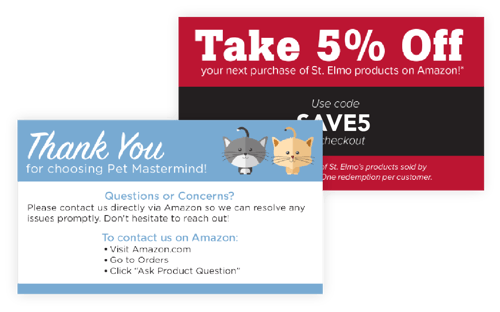 Speaking of reviews, product reviews provide unbiased and trustworthy feedback about an item to customers browsing your products on Amazon. In fact, 79% of Amazon shoppers check reviews on Amazon before buying. Product listings with positive reviews rank higher in Amazon’s organic search results, making them more likely to be found and purchased.
Speaking of reviews, product reviews provide unbiased and trustworthy feedback about an item to customers browsing your products on Amazon. In fact, 79% of Amazon shoppers check reviews on Amazon before buying. Product listings with positive reviews rank higher in Amazon’s organic search results, making them more likely to be found and purchased.
Leveraging the Amazon Vine program for new products you may be launching prior to Prime Day, and incorporating customer feedback into your listing, are the best ways to increase your review count while staying in line with Amazon’s review guidelines.
Think of your Storefront as your own website on Amazon. Though Storefronts have been around for some time now, they’ve been drastically underutilized, so you’ll be one step ahead of the competition if you create and/or optimize yours right now.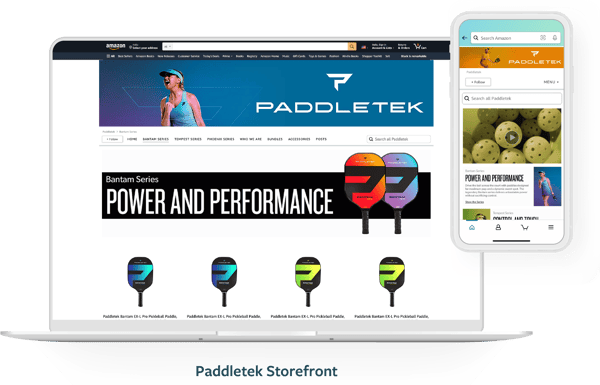 Available to brand-registered sellers, Storefronts (also referred to as Amazon Stores) can even provide behavioral insights by allowing brands to see the exact amount of traffic and sales their Storefront receives. This feature helps sellers see how customers are behaving, adapt their marketing strategy, and then execute changes that lead to higher conversion rates during Prime Day. SupplyKick partners have seen up to a 30% increase in sales per visitor from their Storefront alone.
Available to brand-registered sellers, Storefronts (also referred to as Amazon Stores) can even provide behavioral insights by allowing brands to see the exact amount of traffic and sales their Storefront receives. This feature helps sellers see how customers are behaving, adapt their marketing strategy, and then execute changes that lead to higher conversion rates during Prime Day. SupplyKick partners have seen up to a 30% increase in sales per visitor from their Storefront alone.
Brand-registered sellers should take advantage of Storefronts ahead of Prime Day (and year-round) because:
If you already have a thoughtfully designed Storefront, consider updating your current Amazon Store to showcase certain products, deals, bundles, videos, and messaging catering specifically to Prime Day crowds.
Echoing the importance of creative, today’s Amazon consumers expect authenticity and transparency. The emphasis you should be placing on your Amazon Storefront should be reflected in your listing as well—be sure to share your unique brand story and bring your company’s mission front and center through professional photography, well-written and keyword-optimized content that reflects your brand voice, and graphics that proactively answer any questions Prime shoppers may have about your products before purchasing.
This includes:
On top of basic white background photography, prioritize shooting lifestyle photos and creating graphic variations to show scale and functionality, help customers visualize themselves using your products, and clearly differentiate your brand from the competition.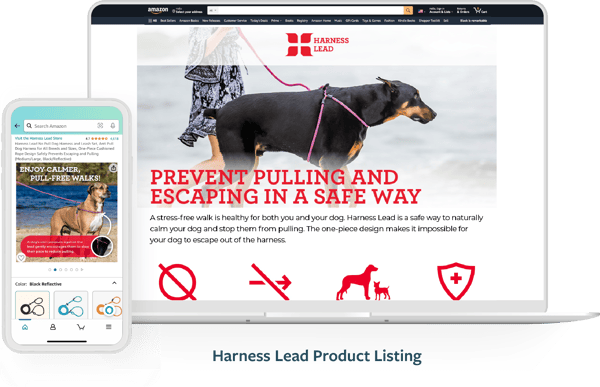 Learn more about making your listing shine with our Amazon Marketing & Advertising Playbook.
Learn more about making your listing shine with our Amazon Marketing & Advertising Playbook.
Trusting the data is one of the most important things you can do leading up to, during, and after Prime Day 2023. Adapting to consumer preferences is vital to preserving your brand image and success, and in the fast-paced world of Amazon selling, you have to do it quickly. If you're having trouble pulling, analyzing, and quickly acting upon your Amazon sales, returns, advertising, and behavioral data, reach out to SupplyKick (we have a new dashboard that we offer to our brand partners!).
Here are some guidelines to follow:
Adopting an Amazon marketing strategy that successfully converts Amazon-specific customers can be tough, and so can developing a profitable Amazon advertising strategy. Finding out how to thrive on Amazon is a complex equation, and as an Amazon seller consultant with over a decade of experience selling on the platform, SupplyKick takes a hands-on approach to optimize your end-to-end marketplace growth strategy based on your specific needs and sales goals.
Not happy with your current marketplace performance? Feeling caught in the multi-seller trap? Need help with platform creative, marketing, advertising, fulfillment, account management, compliance, and/or brand control? We’re here to help.
Lorem ipsum dolor sit amet, consectetur adipiscing elit


Sign up to receive our newsletter for growth strategies, important updates, inventory and policy changes, and best practices.
These Stories on Advertising
For press inquiries, please contact Molly Horstmann, mhorstmann@supplykick.com